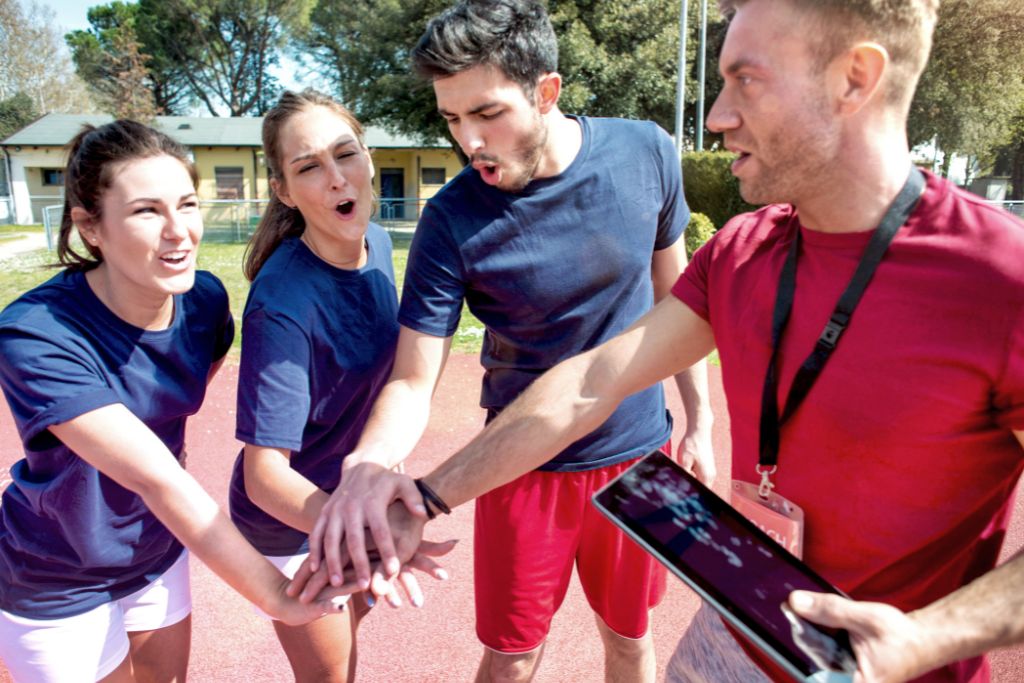
This book, titled Sports in the Age of Technology, investigates how the progression of technology is altering the way in which we see and follow sporting events. In addition to this, it explores the effects that these alterations have on the fans and how they interact with the sport. It is imperative that those in charge of the administration and officiating of sporting events take precautions to guarantee that no one team or individual gains an unfair edge over another by utilizing technological advancements in the form of superior facilities, apparatus, or personal gear.
Tracking and Monitoring
As sports technology continues to evolve, the market is becoming a multi-billion dollar industry. Web development plays a key role in many of the technological advances in sports as many leagues and teams utilize web platforms for team management, content distribution, fan engagement and pro analytics.
Athletes and trainers are now equipped with high-tech sensors to monitor body activity and provide feedback on performance. This helps them identify the right training drills and improve their technique. It also allows them to train more efficiently and reduce the risk of injury.

Tracking and monitoring technologies are now used in many team sports to help coaches and referees make better decisions during the game. For example, Hawk-Eye is used on tennis courts to provide a camera system that can see the ball from any angle after it is released. This has helped to reduce the number of questionable refereeing calls. Instant replay has also become a major part of the game.
Artificial Intelligence
The most obvious way technology is changing sports is in the form of advanced video analysis. This has led to a more accurate and consistent interpretation of rules and has helped prevent cheating by players or spectators.
The mass deployment and diffusion of digital technology in the sports sector leads to new opportunities for the audience, including mediatory watching which allows people with limited physical or mental abilities to follow games without attending them in person (Andrei Angelescu, interview; Amr Elrawi, interview). It also makes it easier for the physically present fans to connect with the game and interact with each other online.

However, bad technologies or misuse of them can create more work for a coach than they save. For example, if an organization purchases a GPS system but a coach doesn’t understand how to properly use it, the team will spend more time analyzing data rather than practicing on the field.
Data Analytics
Athletes and coaches rely on data analytics to help them understand and improve their performance. In sports like basketball, for example, data analytics have helped teams develop strategies that lead to more three-point shots.
Technology is also a significant component of new equipment that enhances athlete safety and improves spectator experience. Examples include protective helmets that use sensors to detect impacts, reducing the risk of concussion and other injuries.

Big data in sports is becoming a vital part of the industry, allowing teams to stay up-to-date on statistics and make accurate forecasts. It may even one day eliminate the need for umpires, letting computers call balls and strikes based on the pitch’s speed and angle. As these technologies continue to evolve, fans can look forward to immersive digital sports experiences. They could be placing virtual bets in a digital sports arena, for instance, and watching the game from an augmented reality seat. Or they could access detailed player-performance analysis on their mobile device, comparing players’ top speeds and other key metrics.
Digital Fan Engagement
When it comes to digital fan engagement, sports teams have many options to consider. Offering behind-the-scenes content, hosting Q&A sessions with players and coaches, and creating a team hashtag are just a few ways to get fans involved with the team.
According to sports business professionals, social media is the top channel that fans use to follow their favourite teams and events. However, this trend is rapidly changing as new digital trends emerge. Streaming a match on their mobile device, checking and predicting scores or building a fantasy team is now possible with just a tap of a button.

This shift is also impacting the way media rights are negotiated. BT Sports, for example, have recently changed the way they broadcast their games by streaming them for free on YouTube instead of gating them to their paying subscribers.
Sports and technology collide in “Sports in the Age of Technology.” From live broadcasting to virtual reality, technology has changed sports. In “The Development of an Egyptian Football Legend: Mohammed Salah,” we celebrate this incredible athlete’s ascension. Discover Salah’s remarkable rise from Egypt to global football stardom. These articles highlight how technology has changed athletics and honor sports legends.

